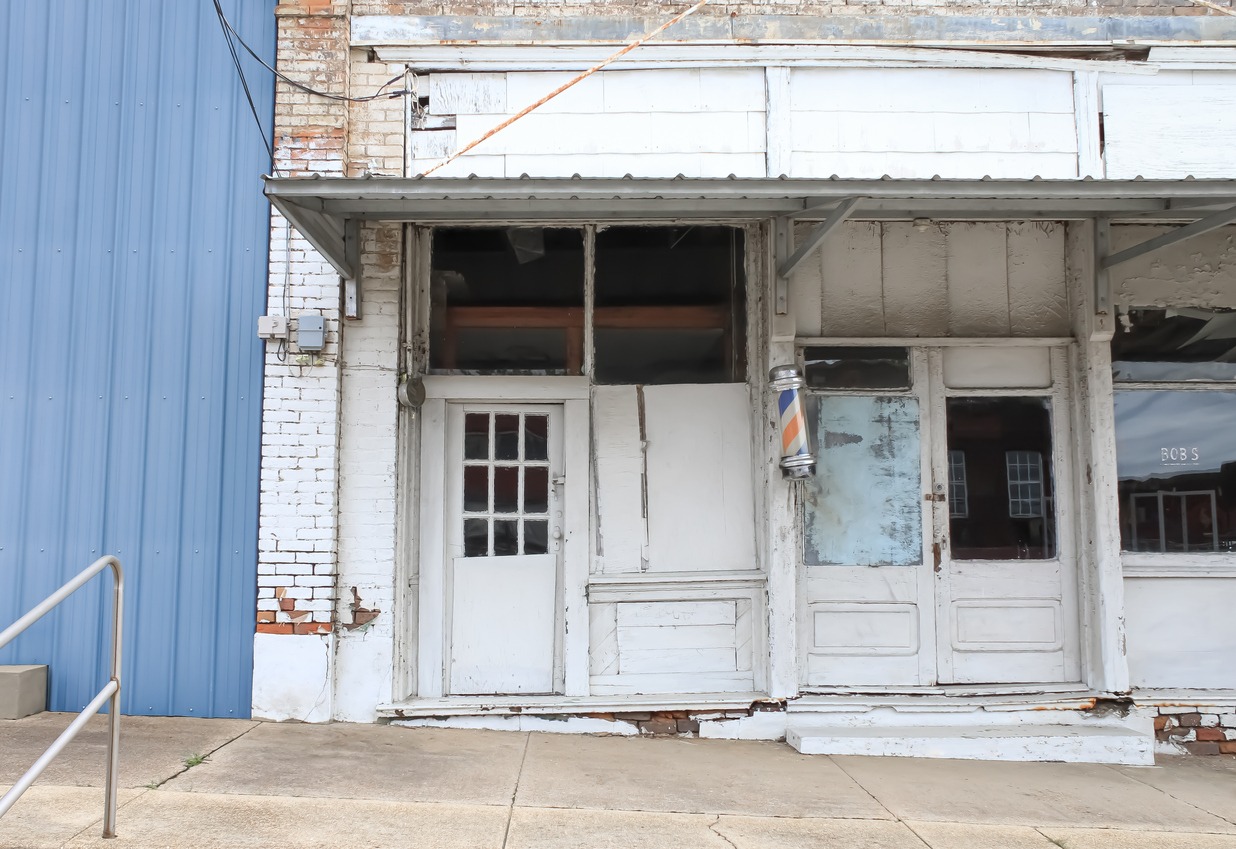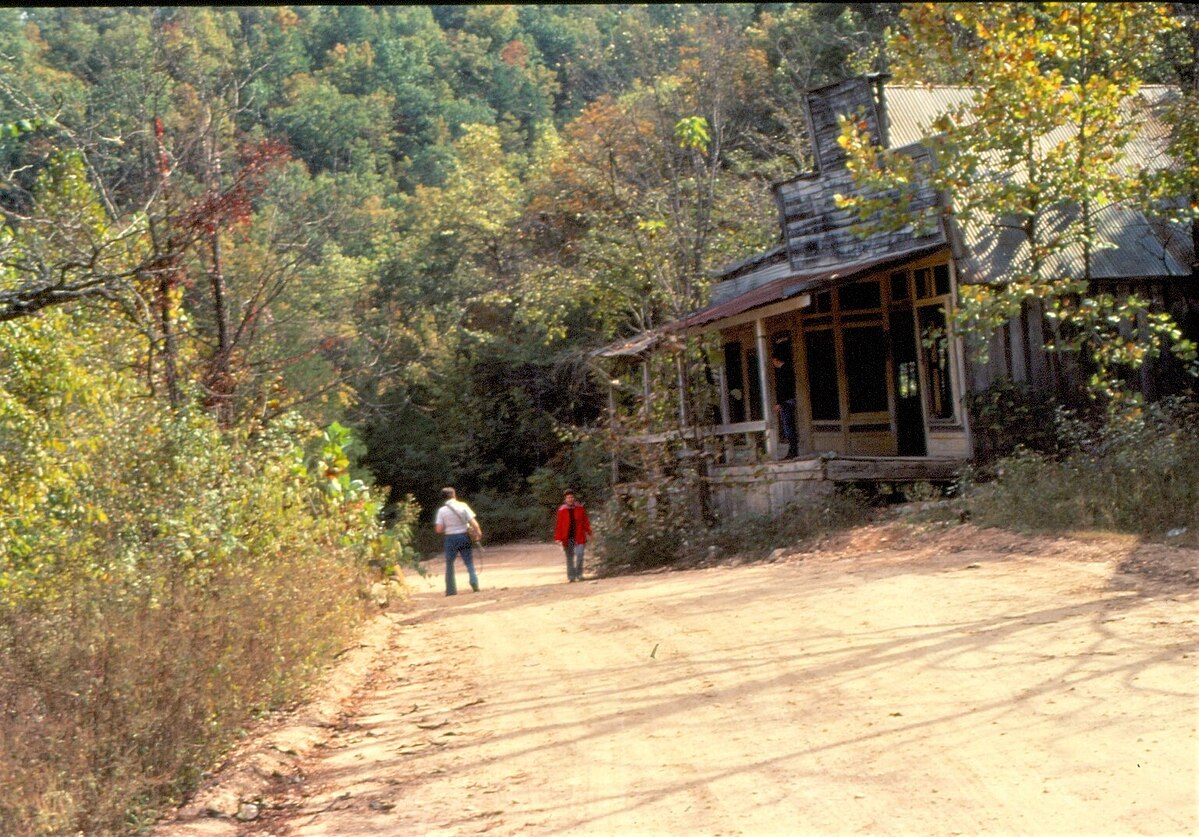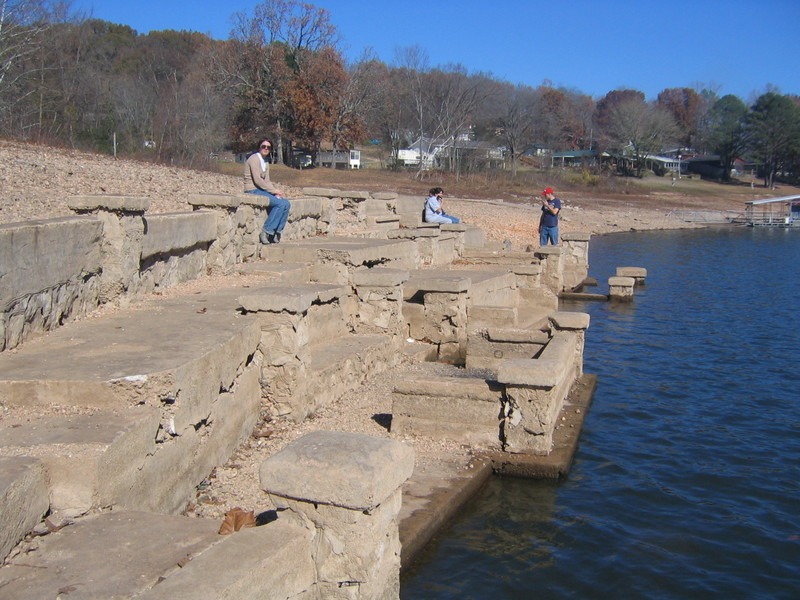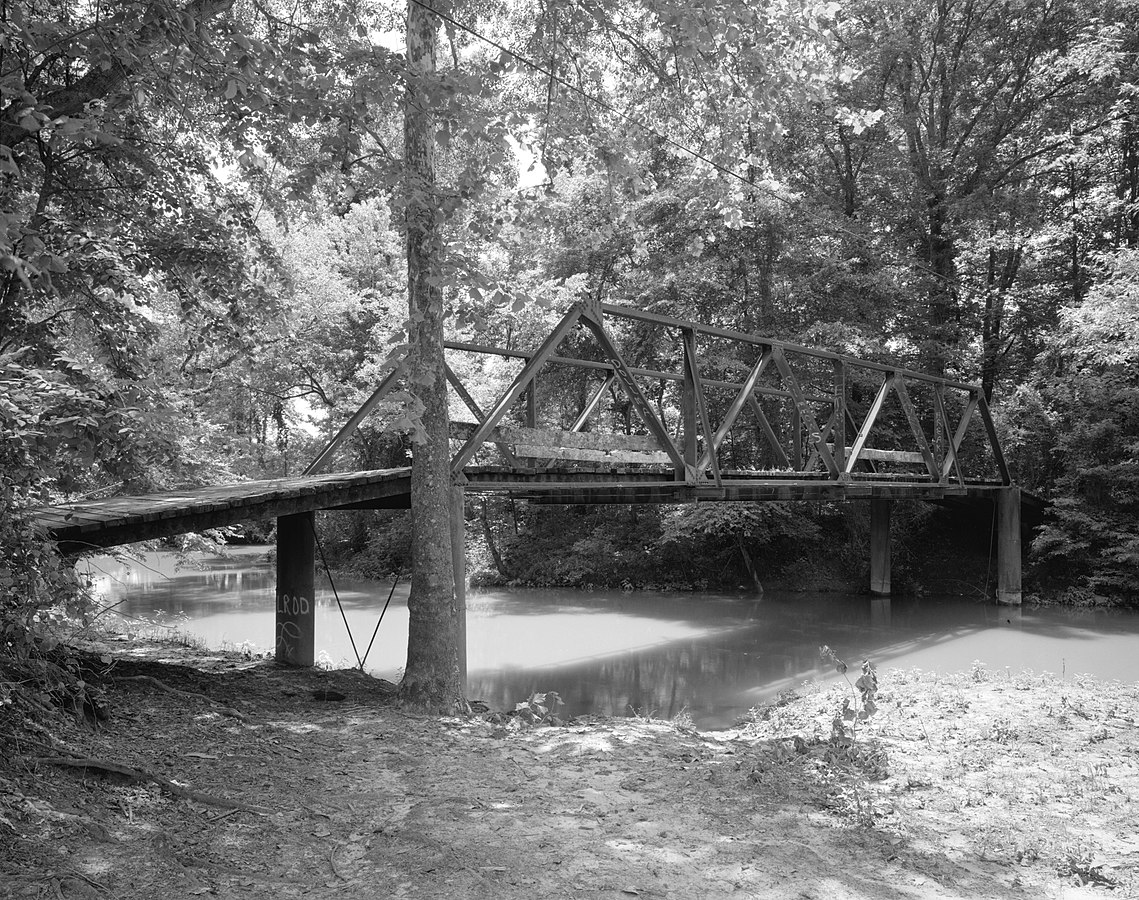Arkansas’ ghost towns hold a unique place in American history, each with its own story of rise and decline. These towns, once centers of community and activity, now stand quietly, their empty streets and abandoned buildings offering a glimpse into a different time. Through exploring these towns, we gain insight into the events and circumstances that led to their current state. These ghost towns, scattered throughout Arkansas, provide an intriguing look into historical patterns and lifestyles.
In this article, we’ll explore various ghost towns across Arkansas. From the silent remains of once-thriving mining communities to the deserted farmlands, each town has its own history and character. They stand as silent witnesses to a past that is both intriguing and informative. Whether you are interested in history, love exploring old towns, or are simply curious about what happens when places are left behind, this journey through Arkansas’ ghost towns offers a fascinating experience. Join us as we delve into their stories and uncover the history hidden within these abandoned places.
Rush
The story of Rush, a once-thriving mining town in the Ozark Mountains of Arkansas, begins in the 1880s. The discovery of zinc ore in this remote and undeveloped part of Arkansas marked the start of a significant transformation. Miners, attracted by the lure of the valuable ore, flocked to the area, leading to the establishment of the town of Rush.
The town quickly grew as the mining industry boomed. By the early 20th century, Rush was a bustling community, housing several thousand residents. The town was complete with essential businesses such as stores, boarding houses, and saloons, all serving the burgeoning population of miners and their families. The mining operations were highly productive, with the Morning Star mine being one of the most notable in the region.
The Decline and Abandonment
The prosperity Rush experienced, however, was short-lived. The end of World War I brought a steep decline in the price of zinc, significantly impacting the town’s economic stability. This downturn, coupled with the depletion of the zinc ore, signaled the beginning of the end for Rush’s mining operations. By the mid-1930s, the mines had shut down, leading to a mass exodus of its population in search of work elsewhere.
With the departure of its residents, Rush gradually transformed into a ghost town. The once lively streets and booming businesses fell into silence and disrepair. By the 1960s, Rush stood abandoned, with its structures serving as the only remnants of its past.
Preservation and Legacy
Today, Rush is part of the Buffalo National River Park and has been preserved as a historic district. Visitors to the area can explore the remnants of the town’s mining past, including the ore smelter, mine shafts, and the buildings that once housed residents and businesses. This preservation offers a unique opportunity for people to step back in time and experience the living conditions of the miners and their families during the zinc mining era.
Booneville
Booneville, located in Arkansas, began its story in a manner similar to many small American towns. Initially, it was a modest community, but its fate changed dramatically with the discovery of coal in the surrounding area. The presence of coal deposits transformed Booneville into a key player in the regional mining industry.
With the coal mining boom, Booneville’s population and economy experienced rapid growth. The town became a hub for miners and their families, and the influx of workers and their dependents led to a bustling community. Booneville’s landscape was marked by the development of mining infrastructures, residential areas, and various businesses catered to serve the growing population’s needs.
Decline and Transformation
The prosperity of Booneville, however, was heavily tied to the coal mining industry. As the industry faced challenges such as the depletion of easily accessible coal and the rise of alternative energy sources, the demand for coal decreased. This decline significantly impacted Booneville’s economy, leading to a gradual reduction in the mining activities that had once been the town’s lifeblood.
As the mines closed, the economic foundation of Booneville crumbled. The lack of employment opportunities led to an exodus of residents seeking livelihoods elsewhere. The town, which had once thrived on the energy of its mining-centric community, began to see a decline in its population and a stagnation in its development.
Booneville Today
In the present day, Booneville stands as a reflection of its rich past, though significantly quieter than during its heyday. The town has transformed from a bustling mining center to a quieter community, with remnants of its mining history still visible. Some abandoned structures and mining equipment serve as historical markers, telling the story of the town’s once-thriving coal mining era.
Monte Ne
Monte Ne, located near Rogers in Benton County, Arkansas, was the brainchild of William Hope “Coin” Harvey, a notable entrepreneur and free silver advocate of the early 20th century. Harvey envisioned Monte Ne as a grand resort and health retreat, capitalizing on the natural beauty and resources of the area. His plan was to create a destination that would attract visitors from across the country, offering them relaxation and recreational opportunities.
In the early 1900s, construction began on the Monte Ne resort. Harvey’s ambitious project included hotels, a bank, a health resort, and even an amphitheater. The resort was designed to be a luxurious getaway with elaborate amenities and attractions. Monte Ne quickly gained popularity as a vacation spot, drawing visitors to its scenic location and lavish facilities.
The Decline and Submergence of Monte Ne
Despite its initial success, Monte Ne faced financial difficulties. Harvey’s grandiose plans required significant investment, and the resort struggled to maintain profitability. The economic challenges were exacerbated by Harvey’s other ambitious project, the construction of a pyramid-like structure called the “Oklahoma Row,” intended to house his writings and artifacts for future generations. The financial strain of these ventures led to mounting debts.
The final blow to Monte Ne came with the construction of Beaver Lake in the 1960s. The U.S. Army Corps of Engineers built a dam on the White River, which led to the creation of the lake. The rising waters of Beaver Lake gradually submerged large portions of Monte Ne, including many of its key structures. Only a few buildings remained above water, with the rest becoming lost beneath the lake’s surface.
Monte Ne Today
Today, Monte Ne is known more for its partially submerged ruins than as a former resort. During periods of low water in Beaver Lake, the remnants of Monte Ne’s structures emerge, offering a haunting and fascinating glimpse into the past. The visible ruins include parts of the Oklahoma Row, the amphitheater, and other structures, standing as eerie markers of Harvey’s ambitious dream.
Davidsonville
Davidsonville, founded in 1815, holds the distinction of being one of the earliest settlements in Arkansas. Situated at the confluence of the Black, Spring, and Eleven Point Rivers, it was ideally located for trade and transportation. This strategic position quickly made Davidsonville an important hub in the region, facilitating commerce and communication.
In its heyday, Davidsonville boasted a thriving community. It was home to Arkansas’s first post office, courthouse, and land office, marking it as a significant center of early state administration and governance. The town served not only the local community but also became a key point for travelers and traders in the region.
Decline and Abandonment
Despite its early importance, Davidsonville began to decline rapidly. The exact reasons for its abandonment are not entirely clear, but several factors likely contributed. One theory suggests that changes in the river channels, which were crucial for transportation and trade, made the location less advantageous. Additionally, the rise of new towns in more favorable locations drew people away from Davidsonville.
By the 1830s, Davidsonville had largely been abandoned. The once bustling town center and its buildings gradually gave way to nature, leaving little trace of its existence. Over time, the site of Davidsonville became overgrown, erasing the physical evidence of this early Arkansas settlement.
Davidsonville Today
Today, Davidsonville is preserved as Davidsonville Historic State Park. The park offers a fascinating glimpse into early 19th-century life in Arkansas. Archaeological excavations at the site have uncovered the foundations of several buildings, including the courthouse and jail, providing valuable insights into the town’s layout and architecture.
Ravenden Springs
Ravenden Springs, located in northeast Arkansas, started as a quaint settlement in the 19th century. Its development was primarily driven by the natural springs in the area, reputed for their healing properties. These springs were believed to have curative powers for various ailments, drawing people seeking relief and healing.
The town quickly became known as a health resort destination. Hotels and boarding houses sprang up to accommodate visitors who came to “take the waters.” Ravenden Springs developed a reputation as a peaceful retreat, offering respite and healing in the serene landscape of the Arkansas hills. The town’s economy and social life revolved around the health tourism industry, with the springs as its centerpiece.
The Decline of Ravenden Springs
As medical science advanced in the late 19th and early 20th centuries, the popularity of health resorts based on natural springs began to wane. The belief in the healing properties of natural springs diminished with the advent of modern medicine, leading to a decline in visitors to Ravenden Springs.
The reduced flow of tourists and health-seekers had a significant impact on the town’s economy. Businesses that had relied on the influx of visitors began to struggle, and many closed their doors. The population of Ravenden Springs gradually decreased as residents moved away in search of better opportunities.
Ravenden Springs Today
Today, Ravenden Springs is a small, quiet community. While it no longer bustles with tourists seeking the healing powers of its springs, the town retains a certain historic charm. The springs and the beautiful natural surroundings continue to be a point of interest for visitors and locals alike.
Cossatot
Cossatot, located in the rich mineral belt of Arkansas, emerged in the late 19th century as a vibrant mining community. The discovery of valuable minerals, particularly in the Cossatot River area, attracted miners and entrepreneurs to the region, leading to the establishment of the town. Named after the nearby Cossatot River, the town was strategically situated to exploit the area’s rich mineral resources.
The mainstay of Cossatot’s economy was mining, with the town’s population comprising mostly miners and their families, as well as traders and other service providers catering to the mining community. The town grew rapidly, supported by the flourishing mining industry, and soon boasted a variety of businesses, schools, and social institutions. Life in Cossatot was characterized by the typical hustle and bustle of a mining town, with a strong sense of community among its residents.
The Decline of Cossatot
The initial prosperity of Cossatot was not to last. As with many mining towns, the depletion of easily accessible mineral resources led to the town’s decline. The mines that had once been the lifeblood of the community gradually became unprofitable to operate. This economic downturn was compounded by the lack of diversification in the town’s economy, which was heavily reliant on mining.
As jobs in the mines dwindled, many of Cossatot’s residents were forced to leave in search of employment opportunities elsewhere. The town, which had once thrived with the energy of its mining-centric community, began to empty out. The decline in population led to the closure of businesses and abandonment of homes, leaving Cossatot a shell of its former self.
Cossatot Today
Present-day Cossatot is marked by the remnants of its mining past. Abandoned structures, dilapidated buildings, and old mining equipment dot the landscape, serving as silent witnesses to the town’s once-vibrant history. The ghost town atmosphere is palpable, with empty streets and quiet where there was once the noise and activity of a busy mining community.
Old Alabam
Old Alabam, an Arkansas town with a rich historical background, was established in the 19th century. Named after the state of Alabama, from where many of its early settlers originated, Old Alabam quickly developed into a thriving community. Its growth was fueled by its location, which was ideal for agriculture and trade.
In its early years, Old Alabam was predominantly an agricultural community, with farming as the mainstay of its economy. The town also served as a local commerce center where farmers and traders would converge to do business. This brought a certain vibrancy and prosperity to Old Alabam, as it became a gathering place for the surrounding rural area.
The Decline of Old Alabam
A significant turning point in the history of Old Alabam was the construction of the railroad in the region. Unfortunately for the town, the railroad was routed away from it, leading to a gradual decline in its importance as a commercial hub. This decision had a profound impact on Old Alabam, as the convenience and economic advantages of rail transportation were pivotal during that era.
As the railroad brought growth and development to other areas, Old Alabam began to lose its residents and businesses. The once-thriving town started to witness a decline in its population as people moved to areas with better economic opportunities. This loss of population led to a decrease in local commerce, further exacerbating the town’s decline.
Old Alabam Today
Today, Old Alabam stands as a ghost town, a quiet testament to its once vibrant past. The few remaining structures and buildings serve as silent reminders of a community that once bustled with life and activity. For visitors and history enthusiasts, Old Alabam offers a poignant glimpse into a bygone era of rural American towns.
Silver Hill
Silver Hill, situated in the mineral-rich region of Arkansas, was established in the late 19th century, primarily driven by the discovery of valuable ores in its vicinity. The town’s name itself reflects the promise and expectations of its early settlers, who were drawn by the prospects of mining silver and other minerals. This initial discovery led to a surge of activity and growth as miners, entrepreneurs, and their families flocked to the area.
During its peak, Silver Hill epitomized the typical American mining town. It was bustling with activity centered around the mining industry. The town not only had mines but also developed a community around them, with residences, stores, and entertainment centers emerging to cater to the miners and their families. This period was marked by optimism and growth, with the town’s population swelling as the mining operations expanded.
The Decline of Silver Hill
The prosperity of Silver Hill was closely tied to the fortunes of its mining industry. As with many mining towns, the resources that had led to its rapid growth eventually began to dwindle. The mines, which were the town’s lifeline, started becoming unprofitable as the ore was exhausted. This decline was gradual but inexorable, leading to a slow economic downturn.
As the mining operations wound down, employment opportunities in Silver Hill diminished. The lack of jobs led to an outflow of residents seeking livelihoods in more prosperous areas. This exodus resulted in a significant decline in the town’s population, leading to the closure of businesses and the abandonment of homes.
Silver Hill Today
Presently, Silver Hill stands as a ghost town, a shadow of its former vibrant self. The remnants of its mining past are still visible through abandoned structures and rusting mining equipment scattered across the landscape. These relics offer a silent yet powerful reminder of the town’s once bustling activity and its subsequent decline.
For history buffs and those interested in the legacy of mining in America, Silver Hill represents a poignant chapter in the narrative of mining towns. It serves as a reminder of the boom-and-bust cycles that were characteristic of such towns, shaped by the natural resources they depended upon.
Gilbert
Gilbert, located in the scenic Ozark Mountains of Arkansas, was established in the early 20th century. The town’s development was intrinsically linked to the arrival of the Missouri and North Arkansas Railroad (M&NA), which provided a vital connection to markets and other parts of the country. Gilbert quickly grew into a bustling railroad town, serving as a significant transportation and commerce hub in the region.
During its heyday, Gilbert was a thriving community, with the railroad at the heart of its economy. The town served as an important stop on the M&NA line, facilitating the transport of various goods, including timber and agricultural products. Gilbert’s population grew, with railroad workers, farmers, and business owners forming a vibrant community. The town featured a variety of businesses, including hotels, general stores, and other establishments catering to the needs of residents and travelers.
The Decline of Gilbert
The decline of Gilbert began with the troubles faced by the M&NA Railroad. Financial difficulties, labor issues, and competition from emerging modes of transportation, such as automobiles and trucks, led to the gradual decline of the railroad. This, in turn, had a direct impact on Gilbert, whose fortune had been closely tied to the railroad’s success.
As the railroad diminished in importance, Gilbert’s economy suffered. The town’s role as a commercial and transportation hub waned, leading to a decrease in business and a gradual outflow of residents. The once bustling town began to quiet down, with many of its businesses closing and buildings falling into disrepair.
Gilbert Today
Today, Gilbert is one of the smallest incorporated towns in Arkansas, known for its picturesque setting and quiet, rural charm. The town retains a sense of its past, with several historic buildings and structures still standing. Gilbert’s location along the Buffalo National River makes it a popular destination for tourists seeking outdoor recreational activities like canoeing, hiking, and fishing.
Skullyville
Skullyville, located in present-day Oklahoma, has its origins deeply rooted in the history of the Choctaw Nation. Established in the early 19th century, it initially served as a significant administrative and cultural center for the Choctaw people. The town’s name, derived from the Choctaw word “Iskalai,” meaning “money,” reflects its importance as a trading post and economic hub within the Choctaw Nation.
Skullyville gained historical prominence due to its role in the Trail of Tears, the forced relocation of Native American tribes from their ancestral homelands in the Southeastern United States to designated Indian Territory. As one of the endpoints of this tragic journey, Skullyville became a receiving station and a place of respite for the Choctaw and other tribes who endured the arduous trek.
The Decline and Transformation of Skullyville
The latter part of the 19th century brought significant changes that led to the decline of Skullyville. The diminishing role of the Choctaw Nation’s traditional economic and governance structures, influenced by broader political and economic shifts in the United States, impacted Skullyville’s prominence.
As the Choctaw Nation faced integration into the United States and changes in federal policy towards Native American tribes, Skullyville gradually lost its status as a cultural and administrative hub. The town’s population dwindled, and its role in the region diminished, eventually leading to its fading from contemporary prominence.
Skullyville Today
Today, Skullyville serves as a historical site, with efforts made to preserve and honor its past. The town’s role in the Choctaw Nation’s history and the broader narrative of the Trail of Tears remains a critical part of American history, offering insights into the experiences and resilience of the Choctaw people.
Conclusion
The ghost towns of Arkansas, each with their unique histories, offer a glimpse into the past. From thriving mining communities to bustling railroad towns, their stories reflect the changing tides of time and economy. Today, these towns stand as quiet but poignant reminders of different eras, inviting us to explore and remember the rich tapestry of Arkansas’ history.





